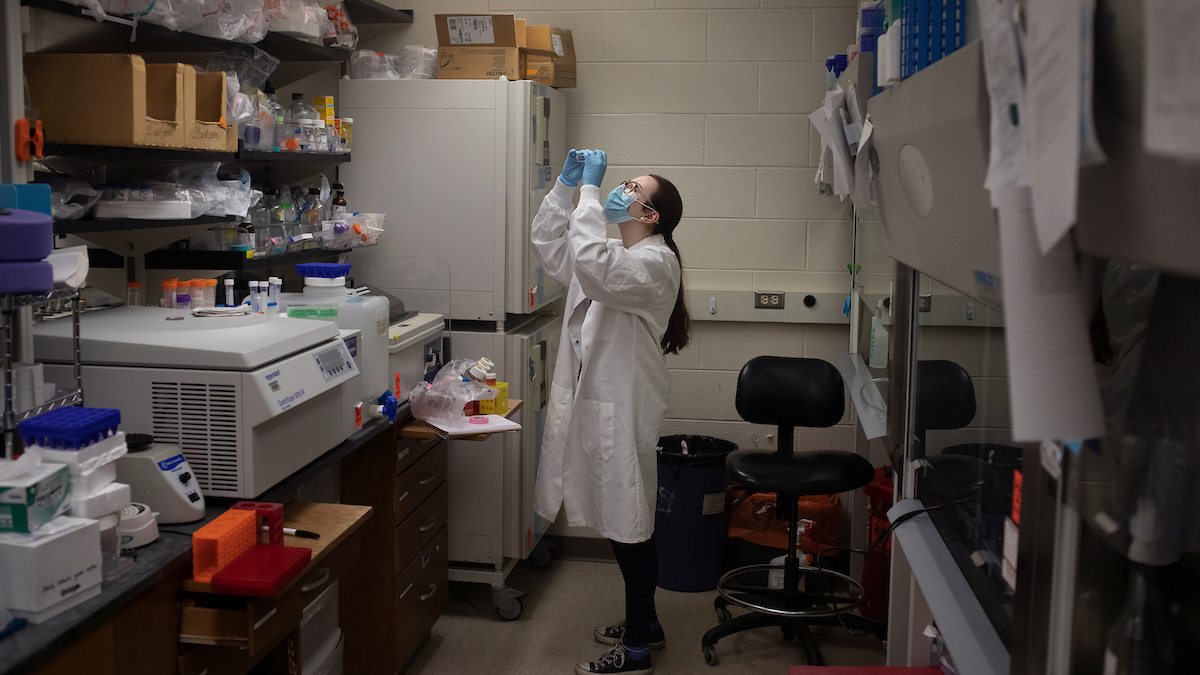UNC-Chapel Hill research funding tops $1.2 billion
Research at Carolina drives innovation and breakthroughs in many fields of impactful study, from gene therapies and drug development to population studies to coastal resilience.

Research at the University of North Carolina at Chapel Hill continues to grow, bringing in more than $1.2 billion in funding awards during the 2022 fiscal year. This is the third year in a row that research awards have topped $1 billion, facilitating research projects and experiments for external sponsors like federal agencies, industry partners, and nonprofit organizations.
“Carolina’s commitment to collaboration allows our researchers to work alongside one another to address local, regional, and global issues,” says Interim Vice Chancellor for Research Penny Gordon-Larsen. “Our expertise in a broad range of health, behavioral, social, and environmental sciences make our research attractive to many external funding agencies, while the benefits of that research directly improve the lives of North Carolinians. The record-breaking award total this year is a testament to the dedication of our students, postdoctoral scholars, and faculty researchers, as well as our staff and administrators who provide critical support for our research enterprise.”
Research at Carolina drives innovation and breakthroughs in many fields of impactful study, from gene therapies and drug development to population studiesto coastal resilience.
During the pandemic, UNC-Chapel Hill positioned itself as a leader in COVID-19 research, ultimately leading to $65 million in funding from the National Institutes of Health for the creation of the Antiviral Drug Discovery Center. AViDD – housed in the UNC Gillings School of Global Public Health and closely affiliated with Carolina’s Rapidly Emerging Antiviral Drug Development Initiative – will develop oral antivirals that can combat pandemic-level viruses like SARS-CoV-2. It is one of nine centers established by the NIH and is an integrated public-private partnership led by an interdisciplinary team of experts from Gillings, the UNC School of Medicine and the UNC Eshelman School of Pharmacy.
Collaboration is key at UNC-Chapel Hill, with 64% of funding awards given to projects that include multiple investigators. The Duke-UNC Alzheimer’s Disease Research Center was established with $14.8 million in funding over five years from the NIH and will focus on identifying early changes in dementia and factors driving disparities. ADRC is a partnership between universities that unites experts from a wide range of disciplines including geriatrics, neurology, psychiatry, radiology, bioinformatics, and pathology.
In the world of future tech, UNC-Chapel Hill is leading a team of chemists, physicists, and engineers from four universities to develop organic semiconductors for the next generation of electronics. Funded with a $7.5 million award from the U.S. Department of Defense, the work could improve the portable power, energy efficiency, and durability of screens and information display devices used both in the cockpit and the field.
Funding from federal sources accounted for about 64% of all research awards for FY22. Top sponsors of research at Carolina included NIH ($570 million), the National Science Foundation ($41 million), the Department of Health and Human Services ($42 million), the U.S. Agency for International Development ($31 million), and the Department of Defense ($25 million).
“These numbers speak to the breadth and diversity of our research portfolio, as well as our leadership as a global research university,” says Gordon-Larsen. “This year’s funding will allow us to build upon our collaborative research environment, respond to new research opportunities, and train the next generation of researchers here at Carolina.”
Research at UNC-Chapel Hill employs over 10,400 North Carolinians in research projects that span all 100 counties. As most research funding comes from outside of the state, it represents new revenue for North Carolina’s gross state product, and spending on research supports over 3,500 businesses across the state.
The most common measurements of research activity in universities are research awards and research expenditures. Awards represent new research grants and contracts a university receives over the course of a fiscal year. They are an important forward-looking measure of the health of a research institution because they often represent multi-year projects that will continue into future years. Research expenditures are an after-the-fact measure of actual research spending that occurred in prior years. Expenditures often take a year or more to be calculated and published nationally.
Learn more about research awards, expenditures and historical trends




